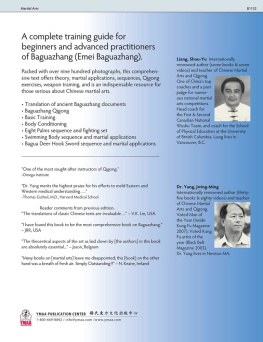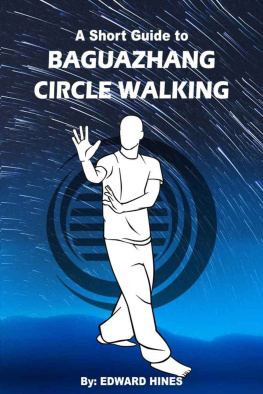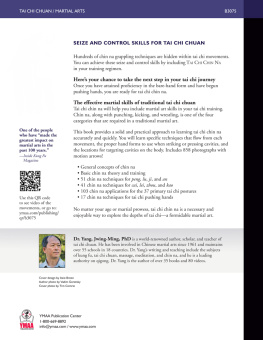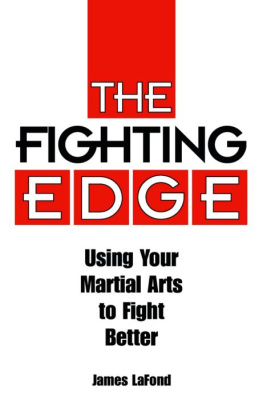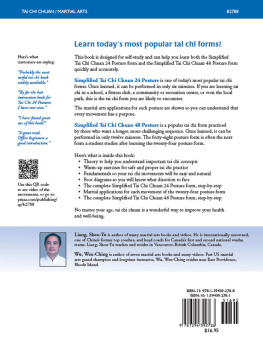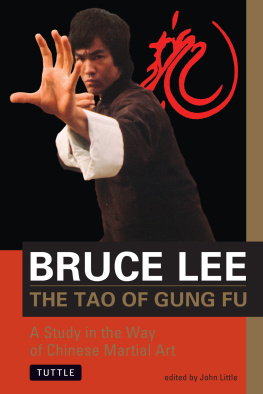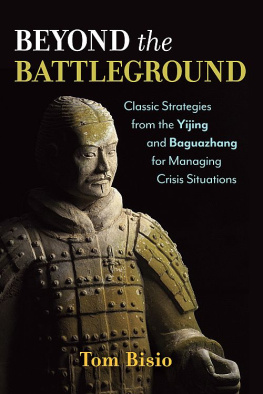iii BAGUAZHANG
Theory and Applications
Master Liang, Shou-Yu Dr. Yang, Jwing-Ming
with contributions by
Mr. Wu, Wen-Ching
YMAA Publication Center
Wolfeboro, NH USA
iv YMAA Publication Center
PO Box 480
Wolfeboro, NH 03894 USA
1-800-669-8892
ISBN: 9781594391132 (print) ISBN: 9781594391774 (ebook)
All rights reserved including the right of reproduction in whole or in part in any form.
Copyright 2008
Previous editions copyright 1994
Cover design by David Silver.
Publishers Cataloging in Publication
Liang, Shou-Yu, 1943
Baguazhang (Emei Baguazhang) / Liang Shou-Yu, Yang Jwing-Ming ; with contributions by Wu Wen-Ching. -- 3rd ed. -- Boston, Mass. : YMAA Publication Center, c2008.
p. ; cm.
ISBN: 978-1-59439-113-2
First published in 1994 under title: Baguazhang (Emei Baguazhang) : Chinese internal martial arts : theory and applications.
Includes bibliographical references and index.
1. Martial arts--China. 2. Hand-to-hand fighting, Oriental. 3. Self-defense. I. Yang, Jwing-Ming, 1946- II. Wu, Wen-Ching, 1964- III. Title.
GV1100.7.A2 L477 2008 | 2008907034 |
796.815--dc22 | 0809 |
Warning: Readers are encouraged to be aware of all appropriate local and national laws relating to self-defense, reasonable force, and the use of weaponry, and act in accordance with all applicable laws at all times. Neither the authors nor the publisher assume any responsibility for the use or misuse of information contained in this book.
Nothing in this document constitutes a legal opinion nor should any of its contents be treated as such. While the authors believe that everything herein is accurate, any questions regarding specific self-defense situations, legal liability, and/or interpretation of federal, state, or local laws should always be addressed by an attorney at law.
When it comes to martial arts, self defense, and related topics, no text, no matter how well written, can substitute for professional, hands-on instruction. These materials should be used for academic study only.
This ebook contains Chinese translations of many terms and may not display properly on all e-reader devices. You may need to adjust your Publisher Font Default setting.
vii
Grandmaster Wang, Jurong
The origin of Chinese Wushu () is far and long, and its contents are as numerous as flowers. This has resulted in hundreds of schools and styles, like hundreds of branches and thousands of vines. All of these schools, after being tested and experienced through the long seasons of history, have harvested a great abundance of fruits. Today, these schools have become known for their excellence of styles. The Baguazhang introduced in this book is one of the most renowned and traditional of these Chinese martial arts.
Baguazhang is a very interesting fist technique (Quan Shu, ) (i.e., martial style). If it is practiced often, it can strengthen the body and increase longevity. It can also train practical martial techniques, providing an effective method of self-defense.
In Baguazhang practice, the upper limbs use in almost all the palms. Various skills are developed from the constant changing of the palm techniques. During the palm training, the lower limbs walk along a circle, and use swaying and arcing stepping as major techniques. Baguazhang combines the theories and patterns of the Eight Trigrams (Bagua, ) of the Zhou Yi () (Zhous Book of Changes). Consequently, this has resulted in the possibility of changing during walking as desired. Not only that, it allows the possibility of actions such as the palms boring, turning, sideways and vertical maneuvers.
Baguazhang combines the maneuvers of the palms and stepping techniques, swaying and arcing-stepping for walking and turning, linking each step to the next, and its variations are many. The basic palm techniques of the Baguazhang are Lao Ba Zhang () (Old Eight Palms). These eight palms can be combined freely in practice. Therefore, they are alive and free, and can be practiced by either a single person or by two persons.
This traditional fist (i.e., martial style) has been a favorite of a great portion of Chinese people for hundreds of years. Today, Baguazhang is gradually winning many foreign friends. However, geographic limitations make it difficult for the exchange of knowledge, and the art is not currently widely known or accepted in the West. This book was written through the collaboration of Dr. Yang, Jwing-Ming ( ), Master Liang, Shou-Yu (), and Mr. Wu, Wen-Ching (). Together, they have compiled and translated documents regarding the many traditional Baguazhang theories and principles. This could help spread Baguazhang knowledge and techniques to America, Canada, and all other countries of the world. The content of this work is very abundant and profound, and includes discussion and commentary on theory, principles and basic training. Beginning with the basic training of the sixteen words and the cultivation and training of Baguazhang Qigong, it moves on to cover topics such as solo practice of the Old Eight Palms, matching of the Old Eight Palms with a partner, introduction of Gongfu, and a clear and detailed explanation of the three postures: high, middle, and low. Finally, the unique traditional Baguazhang weapon, Yuan-Yang Yue () (Deer Hook Sword), is also introduced. Working with this weapon will significantly help any viii practitioner realize the importance of coordination, harmonious feeling and integrity of Baguazhang as presented in this book.
I am very happy to see the publication of this book, which offers a great guide to Chinese Wushu. I would like to congratulate the authors for their effort and contributions to the popularization of Chinese Wushu ().
Professor Wang Jurong
Professor of Shanghai Athletic College
Chinese Wushu, National Judge of Archery
Vice Chairman of Shanghai Wushu Association and the Head of the Wushu Judging Committee
Wushu Gold MedalistFirst National Athletic Competition, Taiwan, Republic of China, 1953
Grand Guoshu Champion, Womens DivisionSeventh National Athletic Competition Taiwan, Republic of China, 1946
ix
Grandmaster Jiang, Hao-Quan
During this exciting period when Chinese Wushu is blossoming in every corner of the world, this written contribution by Master Liang, Shou-Yu (), Dr. Yang, Jwing-Ming (), and Mr. Wu, Wen-Ching () to the development of Chinese Wushu will definitely be both beneficial and influential.
Among the thousands of different martial styles and schools in China, Baguazhang is one of the most famous. Numerous varieties of Baguazhang schools exist today, and the contents of the art are abundant and profound, such as Wudang Style Baguazhang (), Yin-Yang Style Baguazhang (), The Complete Technique Style Baguazhang, Emei Style Baguazhang (), Xingyi Style Baguazhang (), and Swimming Body Style Baguazhang ().
Among the numerous different styles of Baguazhang, all of them have their specific unique characteristics in technique and movement, which gives rise to thousands of variations and tens of thousands of derivations. However, no matter how numerous or elaborate their variations, none can be separated from their theoretical origins. These origins (i.e., theory and principles) are walking the circle, following the strategies of four directions, four diagonal corners, and the eight trigrams the eight directions, coordinating the body and hands movements, muddy stepping and spinning, varying freely as wished, the steppings are as firm as Tai Mountain (), light and agile as the goose feather, and the shapes are like eight animals actions. In the attacks, the defense is hidden within and in the defense, the offense is ready to return, use the soft to conquer the hard, and mutually support with the hard, and once move slightly, the entire body moves.

